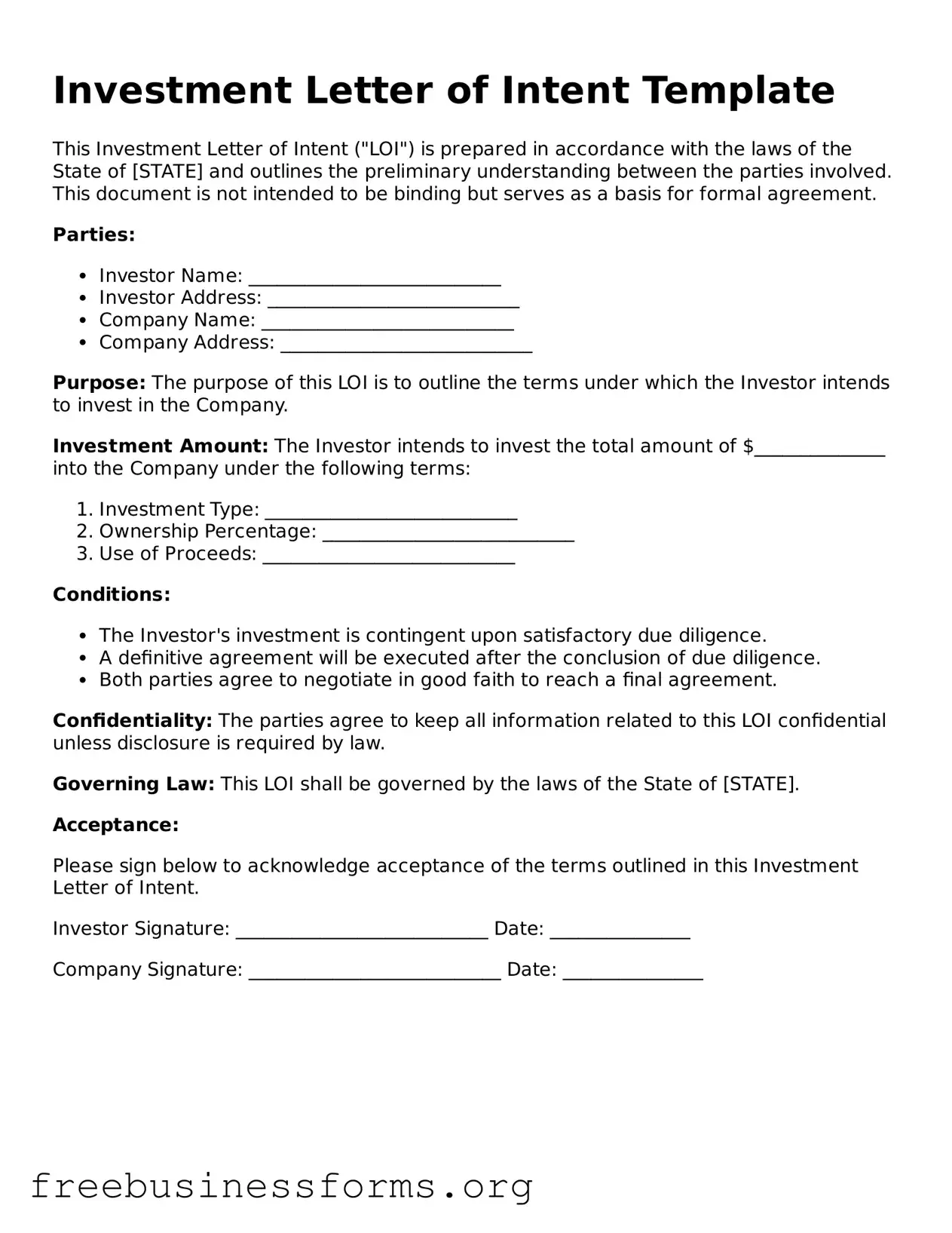Investment Letter of Intent Template
This Investment Letter of Intent ("LOI") is prepared in accordance with the laws of the State of [STATE] and outlines the preliminary understanding between the parties involved. This document is not intended to be binding but serves as a basis for formal agreement.
Parties:
- Investor Name: ___________________________
- Investor Address: ___________________________
- Company Name: ___________________________
- Company Address: ___________________________
Purpose: The purpose of this LOI is to outline the terms under which the Investor intends to invest in the Company.
Investment Amount: The Investor intends to invest the total amount of $______________ into the Company under the following terms:
- Investment Type: ___________________________
- Ownership Percentage: ___________________________
- Use of Proceeds: ___________________________
Conditions:
- The Investor's investment is contingent upon satisfactory due diligence.
- A definitive agreement will be executed after the conclusion of due diligence.
- Both parties agree to negotiate in good faith to reach a final agreement.
Confidentiality: The parties agree to keep all information related to this LOI confidential unless disclosure is required by law.
Governing Law: This LOI shall be governed by the laws of the State of [STATE].
Acceptance:
Please sign below to acknowledge acceptance of the terms outlined in this Investment Letter of Intent.
Investor Signature: ___________________________ Date: _______________
Company Signature: ___________________________ Date: _______________
